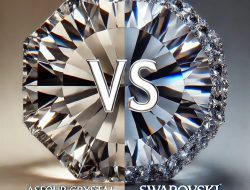Difference Between Swarovski Crystals And Cubic Zirconia – Diamonds are a girl’s best friend, Marilyn Monroe’s beloved line and song in the 1949 film Gentlemen in Blondes is true, but gold rings used to be the thing. To symbolize the bond of marriage, DeBeers launched its advertising campaign in 1938 with the title “Diamonds Are Forever”. However, as a symbol of love, commitment and fidelity today, diamond rings are not only beautiful but also a symbol of commitment and the next chapter in a couple’s life that has become very famous.
Difference Between Swarovski Crystals And Cubic Zirconia
swarovskijewelry – For many years, the price of diamonds was held by a company that controlled their distribution by strictly controlling the number of diamonds allowed on the market. Today this is not a problem as diamonds are available from various channels throughout the world due to international market prices. The demand for diamonds is on the rise and due to reduced supply and high prices, cheaper alternatives are being used.
Unlike other rocks, diamonds are found in the Earth’s mantle, a fluid-like layer between the outer core and crust that is exposed to extreme heat and pressure. Deeper than 100 miles beneath the Earth’s surface, simple carbon minerals turn into diamonds due to the surrounding heat and pressure. All this happened between 1 billion and 3.3 billion years ago, when the earth was much warmer than it is today. We can’t mine far enough to reach the Earth’s mantle, but fortunately volcanic eruptions are good for us. The last magma eruption more than 20 million years ago brought diamonds close to the surface for mining.
Diamonds, Cubic Zirconia, Moissanite Crystals and Swarovski
Real diamond
is a natural diamond stone made from carbon atoms arranged in a certain structure. Diamonds are extremely hard, currently ranking 10th on the Mohs hardness scale, the hardest substance in the world. Although diamonds are very expensive, their value is often tied to the four Cs, namely carat, cut, color and clarity. It is very rare to find a flawless diamond, which is why they are so expensive. The same goes for color. Most diamonds, except for a few spots or blemishes, are yellow or brown, so colorless diamonds are very rare to find.
Baca Juga : 2024 Swarovski Bracelets Beautiful and Stylish
Diamonds have a high refractive index of 2.417 and a dispersion of 0.044, which means that when light passes through air towards a diamond whose density is different from air, the light will slow down and bend due to the angle of the moon. revolution The different colors that make up white light slow down at different speeds and split or separate as they enter the diamond. This separation of the color spectrum is called dispersion and as the light leaves the diamond material and enters air the angle of refraction bends again and the dispersion, which is the separation of white light into the different colors (already contained in the light) increases giving us the color spectrum. Diamonds are also electrical insulators but the best known natural thermal conductors are 4/5 times more conductive than copper. Diamonds have a specific gravity of between 3.5 – 3.53 which is the density of the material compared to the same amount of water and is useful for gem identification by gem buyers and gemologists.
Diamond Dispersion
or synthetic diamonds as they are sometimes called have been produced since the mid 1950s although the technology can only produce small diamonds. Over the last few years, the technology has advanced rapidly and two companies are now able to produce diamonds that are identical in hardness, dispersion, gravity, refraction and chemical composition to the highest quality mined diamonds available.
Baca Juga :List of Famous Indonesian Content Creators
While a high-quality one carat diamond costs thousands of pounds, a man-made diamond of the same quality can be made for less than £5. This will obviously have a huge impact on the diamond industry in the coming years because when comparing cultured and mined diamonds side by side, they are virtually indistinguishable, but they can be distinguished using spectroscopy, infrared, ultraviolet or X-ray wavelengths. Cultured diamonds can be grown from single crystals using a technique called chemical vapor deposition. This technique works by placing a cultured seed crystal in a chamber through which hydrogen and methane gases are passed. This chamber is exposed to extreme heat and pressure, and hydrogen and methane deposits accumulate on the diamond crystals, which continue to grow in the process.
Cubic Zirconia
Cubic Zirconia is more popular than diamonds, because both look similar to diamonds. Cubic Zirconia, also called CZ, is made from Zirconium Dioxide which is different from diamond, although it has a different chemical composition and is closer to diamond properties than other stones. Natural CZ was first discovered in 1899, but it was not until the late 1970s that synthetic CZ first appeared for use in jewelry.
At first glance, CZ looks like a diamond, but if you look closely it turns out to be different. CZ has a gravity between 5.6 and 6.0, which is 1.6 times the weight of diamond. CZ has a hardness of 8 on the Mohs scale, a refractive index of 2.176 and a scatterability of 0.060 which means it is not as hard as a diamond, a little brighter, but more appearance of prismatic fire means the bright colors of the gemstone. Another thing to note is that natural diamonds have impurities that CZ does not.
The color is also clear, but most diamonds are not. However, natural diamonds can be colored by adding metal oxides during production. Unlike diamond, CZ has good thermal insulation, meaning it will burn but is not resistant to the heat of diamond. This is one of the tests used to separate diamonds from CZ. Caring for CZs is important because diamonds are more fragile than diamonds and are susceptible to damage such as chipping and scratching over time.


